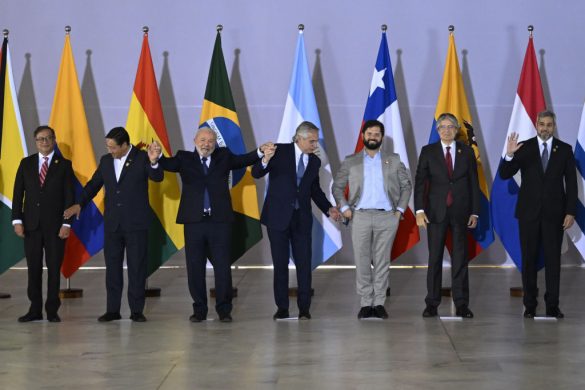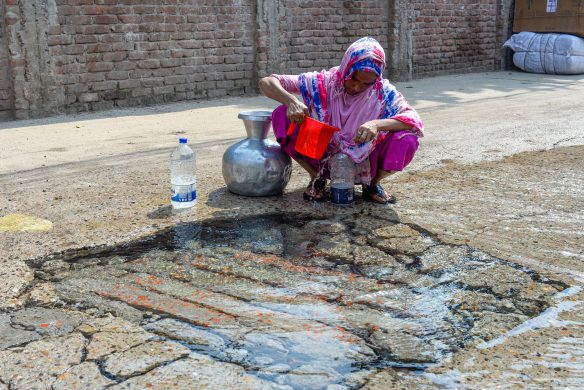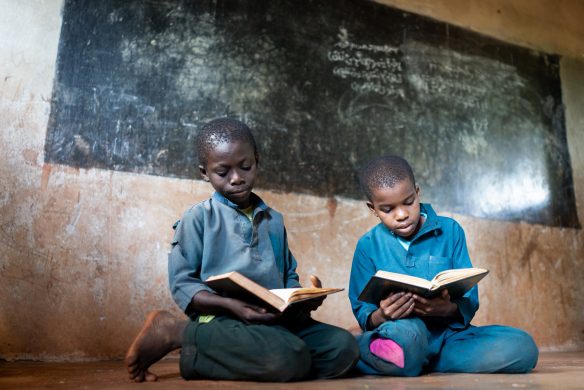SANTO DOMINGO, 10 August, 2016 (WFP): Startling figures were released today about the impact of micronutrient deficiencies, or “hidden hunger” during the opening of the First Regional Workshop on Rice Fortification in Latin America and the Caribbean,” which aims to highlight rice fortification (berigelse af ris, red.) as a cost-effective strategy that can help countries achieve Zero Hunger by 2030, as laid out in the Sustainable Development Goals (SDGs).
Påvirker to milliarder mennesker i verden
Micronutrient deficiencies, are a global health issue that affects 2 billion people.
In Latin America and the Caribbean alone, iron deficiency anaemia affects 22.3 million preschool children and 33 million women of childbearing age.
Zinc, iodine and vitamin B12 deficiencies, important in the stages of development and growth, also affect a large portion of the population.
It is estimated that in the Latin American and Caribbean region 51 million people are at risk of zinc deficiency.
The event was attended by the Dominican Republic’s Vice-President, Margarita Cedeño de Fernandez; the Minister of Health, Altagracia Guzman Marcelino; the Regional Director of the UN World Food Programme (WFP), Miguel Barreto, and WFP’s Global Director of Nutrition, Lauren Landis.
Fødevarekvantitet over kvalitet
“People often eat what seems sufficient in quantity, but they are not eating well if we look at the quality of the food they consume” said Barreto “So, paradoxically our countries today face the double burden of obesity and undernutrition – and these can coexist with micronutrient deficiency.”
The use of rice fortification is one of the most effective and inexpensive strategies for reducing micronutrient deficiencies within large segments of the population, considering that 3 billion people around the world consume it as their staple food.
“Rice fortification is an opportunity to improve the nutrition of our people as it is a staple food in many of our countries”, Barreto said. “But to succeed in this effort, it is essential that governments, the private sector and civil society prioritize rice fortification programmes as they are cost-effective and have a high impact,” he said.
30 procent af børnene lider af anæmi
Of all the micronutrient deficiencies, anaemia caused by iron deficiency is the most serious.
According to the World Health Organization (WHO), anaemia affects 30 percent of children under 5 years of age throughout the region and 19 percent of working-age women.
Meanwhile, chronic malnutrition – stunting – impacts more than 10 percent of children under 5 years.
Stunted children are short for their age and it affects their health, brain development, school performance and future earnings.
One of the aims of the event is to introduce the participants to the scientific evidence and experience in rice fortification implementation – for example, the case of the Philippines in Asia and Costa Rica in Latin America and the Caribbean – to help governments plan and to provide advice for countries interested in implementing a rice fortification strategy and creating a network of national support efforts for the process.
Event participants include representatives of the governments of Colombia, Cuba, Ecuador, Guatemala, Haiti, Panama, Peru and the Dominican Republic, experts from the University of California-Davis, the Global Alliance for Improved Nutrition (GAIN), Emory University, the United States Agency for International Development (USAID), the World Health Organization (WHO) and the Institute of Nutrition of Central America and Panama (INCAP), among others.
This regional event is organized by the Vice President of the Dominican Republic, the Ministry of Public Health and WFP.















